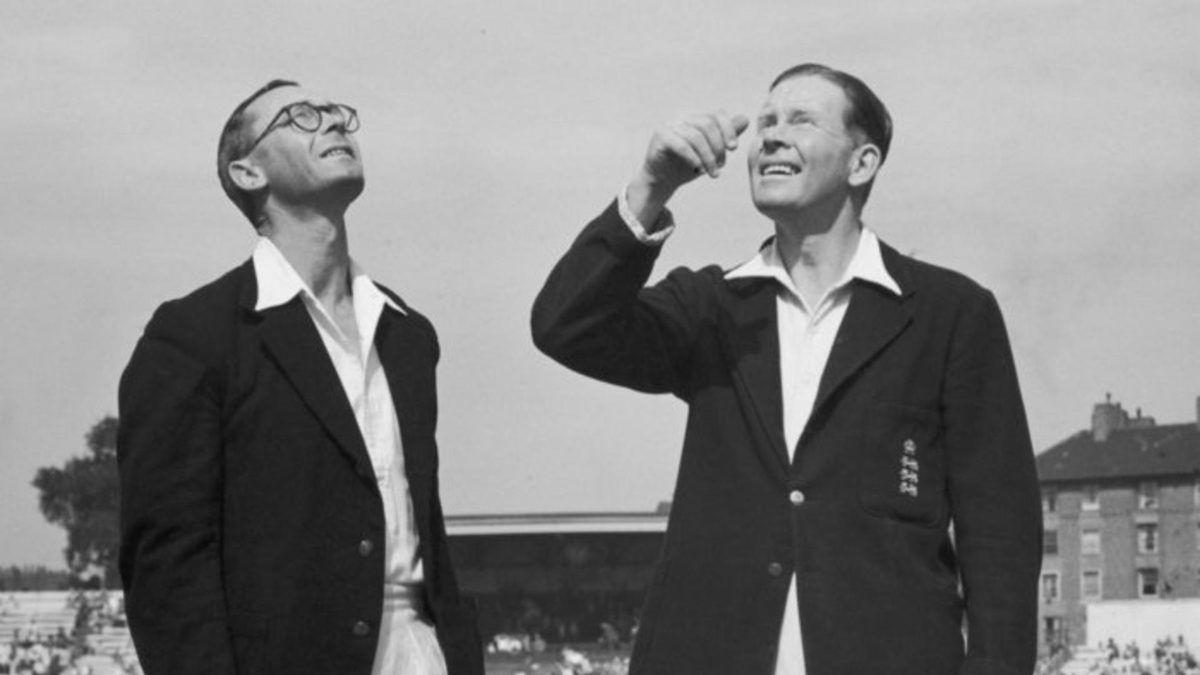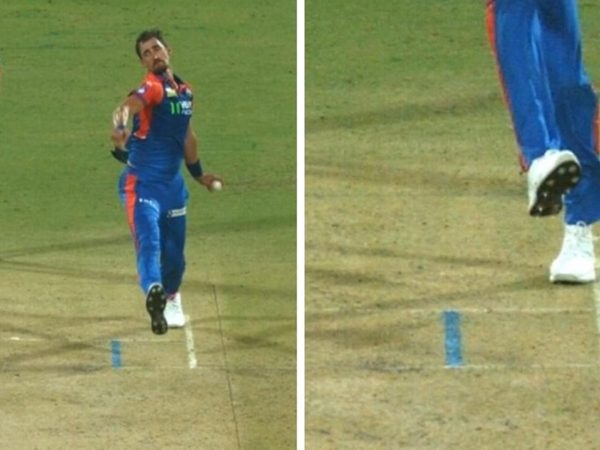
“The team of only 15 players came by ship, arrived in April, left in September, and played 33 first-class matches.”
New Zealand’s performances on the 1949 tour of England signalled the end of three-day Test matches and provided comfort for Rod Edmond during the years of defeats that were to follow.
During my childhood in New Zealand in the early 1950s the national cricket team always lost. The nadir was Eden Park, Auckland in 1955 when New Zealand were dismissed for 26, a world-record low to this day. The horror of that collapse stays with me. For a nine-year-old it was almost too much to bear.
My comfort during these torrid years was a book about the 1949 New Zealand tour of England, Alan Mitchell’s Cricket Companions. I read it over and over, thrilling to the run-scoring feats of the two finest left-handers New Zealand has ever produced, Bert Sutcliffe (2,627 tour runs, average 59.70; 423 runs in the four Tests, average 60.42) and Martin Donnelly (2,287 tour runs; average 61.81, 462 in the Tests, average 77).
In those days a tour was a tour, not a visit. The team of only 15 players came by ship, arrived in April, left in September, and played 33 first-class matches as well as four Tests. Alan Mitchell travelled with the team, shared their accommodation, and his book conveyed the feel of this exhausting itinerary, the camaraderie especially but also the strain. I was gripped by his account of the captain Walter Hadlee fainting in the dressing room after a hectic run-chase against Derbyshire under a “burning sun”.
Re-reading the book almost 60 years on, the consolation and the pride it offered returns as fresh as ever. Every page is familiar. But the tour it describes would be totally unfamiliar to anyone accustomed to seeing half a visiting team fly in from the IPL a couple of days before the first Test, as Brendon McCullum’s did this year. The 1949ers were all amateurs: Hadlee was an accountant, Harry Cave a sheep farmer, CC Burke worked in the Post and Telegraph Department. Their cricket at home was limited to Saturday club matches and three three-day first-class fixtures each season. They enjoyed daily expenses of £1, raised to 30 shillings during the tour.
Test matches on the tour were limited to three days, something the team resented. It was believed they wouldn’t be good enough for anything more, and the counties objected to losing valuable players from Championship matches for any longer than necessary. County cricket had an influence then that has long gone. The Middlesex players for the first Test at Leeds – Mann the English captain, Compton, Edrich and Young – arrived at 2am on the morning of the first day having come hotfoot from a county match that had finished that evening, a long-ago version of flying in from the IPL.
 The New Zealand tour party of 1949 played 33 first-class matches, losing just once
The New Zealand tour party of 1949 played 33 first-class matches, losing just once
The three-day Tests resulted in four draws, neither side having the bowling to dismiss strong batting line-ups twice. As draw followed draw England included eight bowlers for the final Test at the Oval but with the same result. Hadlee’s team ensured that three-day Tests would never be repeated, although the performance of the next New Zealand team to visit, in 1958, provided grounds for bringing them back.
Mitchell’s ‘cricket companions’ were indeed just that for my childhood self. There was pleasure and relief in reading of a New Zealand team that didn’t lose a Test. In fact the only loss on the whole tour, remarkable on the face of it, was to Oxford University. But university cricket was different in those days. Oxford had several internationals, and New Zealand were caught on a sticky wicket. I hated reading the chapter that Mitchell gave to this defeat. But the players were the thing.
I most identified with the youngest member of the team, 20-year-old John Reid, allrounder par excellence. A middle-order batsman, medium-fast seamer and brilliant fielder, it was his ability as reserve wicketkeeper that had clinched his selection for the tour. Reid went on to captain New Zealand’s first-ever Test victory, against the West Indies in 1956, and to become probably the country’s finest-ever allrounder. As a student in Wellington in the mid-1960s I used to play at his squash club across the road from the university and inwardly genuflect as he signed me in. But in 1949 he was work-in-progress and only played in the last two Tests. Mitchell’s account of my hero’s 93 at the Oval was my favourite passage.
It was the left-handers, Sutcliffe and Donnelly, however, who most inspired the dogged young left-hander I was becoming. Sutcliffe’s tour aggregate remains second only to Bradman. He was a natural – lithe, graceful, with exquisite timing in front of the wicket. Cover-drives flowed from his bat like a swift-moving river. He was another of the outstanding fielders in the team and a useful left-arm spinner. Years later, when he was 40 and I was 17, I faced him in a club match in Hamilton, too awed to do anything but defend my wicket.
 Bert Sutcliffe scored 2,627 runs on the 1949 tour of England
Bert Sutcliffe scored 2,627 runs on the 1949 tour of England
But the player who haunted my imagination, who I was never to see let alone play against, was Martin Donnelly. His innings of 206 at Lord’s that summer remains the only double-century by a New Zealander in a Test in England, joining centuries he also made at Lord’s for the Dominions against England, Oxford against Cambridge, and Gentleman versus Players. While at Oxford he also played rugby for England. And to cap it all, he was born in Ngaruawahia, just a few miles down the road from my home in Hamilton.
And yet he was hardly seen in New Zealand. Only 13 of his 131 first-class matches were played at home, and none of his seven Tests. He had come to England with the 1937 team as a 19-year-old after only one first-class match. After war service as a tank commander in North Africa and Italy he went on to Oxford from where he joined the 1949 tour.
Having relished Mitchell’s account of Donnelly’s wonderful summer, the saddest moment of Cricket Companions for me was the description of him standing, “a lonely figure on the wharf at Tilbury”, when the Rangitata left for home at the end of the tour. This was Donnelly’s farewell to New Zealand cricket as well as to his cricket companions. He retired almost immediately and went to live in Australia where he had a successful business career. Donnelly had a twin brother, Maurice, who died as a baby in the Spanish flu epidemic in 1918. Looking back I wonder if there might have been Donnellys to join those other distinguished brothers – Hadlees, Crowes, Bracewells, McCullums – who have graced New Zealand cricket.
And so my golden summer (not a single day was lost through rain) is one that I know only through the bliss of a genre now vanished – the book of the tour. Today, in 2015, after a series short on the number of Tests rather than days, in which New Zealand’s style of cricket was widely praised, I leave the last word on the 1949 tour to Alan Mitchell:
“Both teams demonstrated that Tests can be played in an excellent spirit, without incidents, and that though the shadow of national prestige may lie heavily over them, these matches can provide a great deal of fun both for players and spectators.”








